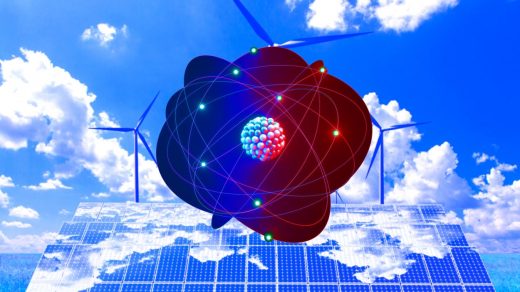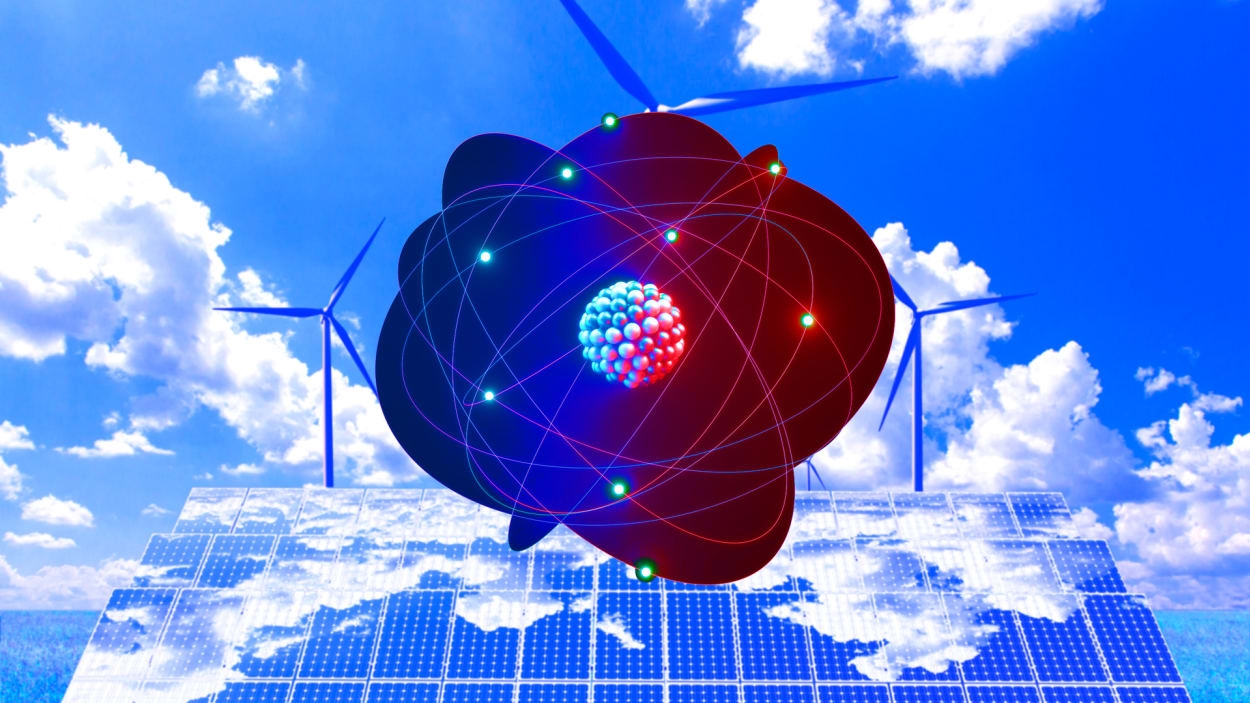Fusion breakthrough: What happened and what it means for clean energy
The Energy Department announced today that scientists at Lawrence Livermore National Laboratory in California achieved a net energy gain in a fusion reaction for the first time—a breakthrough in the long-running pursuit of potentially limitless carbon-free power.
Since the 1940s scientists have researched ways to harness the energy process that powers the sun in hopes of generating a cleaner fuel source than fossil fuels and conventional nuclear fission. Fusion reactions, which result from fusing nuclei together, produce an immense amount of energy but emit no carbon and produce no long-lived nuclear waste; the main byproduct is helium.
Experiments gave us the hydrogen bomb and the most powerful nuclear weapons ever built, but uses for civilian power have never materialized. That’s not for lack of trying: In recent years, government labs and more than two dozen startups have raced to achieve even an initial milestone in achieving net energy gain, or ignition, which occurs when the energy produced by a fusion reaction exceeds the energy used to make it.
Now that we’ve reached that long-awaited milestone, fusion energy looks closer than it has in decades. But that doesn’t mean we’ll be getting it anytime soon.
How to reach net energy gain
To reach fusion ignition, a $3.5 billion experiment at Livermore called the National Ignition Facility (NIF) uses a process called inertial confinement fusion, which involves shooting hundreds of high-powered laser beams at a polished diamond spherical capsule containing a small pellet of deuterium-tritium fuel. The laser blasts cause the capsule to implode, compressing the fuel at pressures greater than the sun to create a hydrogen plasma and—scientists hope—force the nuclei of atoms to fuse, releasing a tremendous amount of energy.
The ignition the NIF produced in an experiment last week amounted to 3.15 megajoules of energy, a gain of about 54 percent over the roughly 2 megajoules that the reaction consumed from the lasers, the lab’s analysis suggests. The test built on a record the lab set last August, in a fusion experiment that yielded over 1.3 megajoules. The Financial Times first reported the breakthrough on Monday, and the Dept. of Energy confirmed it during a press conference on Tuesday.
US Energy Secretary Jennifer Granholm called the net energy gain a “breakthrough that will go down in the history books,” and hailed the work of national labs to “solve humanity’s most complex and pressing problems, like providing clean power to combat climate change and maintaining a nuclear deterrent without nuclear testing.”
The director of Livermore, Dr. Kim Budil, said the quest for fusion ignition in the lab was “one of the most significant scientific challenges ever tackled by humanity,” and that researchers had “taken the first tentative steps toward a clean energy source that could revolutionize the world.”
What’s next for the fusion frontier?
The NIF’s approach—intended for weapons research specifically—is a terribly inefficient way of producing electricity. NIF’s laser, the world’s largest, loses up to 99% of its energy in the process of heating up the pellet. In an actual reactor, there’s also the energy lost to waste heat and noise, which typically means a thermal efficiency of less than 50%. To be a viable commercial energy source, fusion reactors must be able to draw significantly more net energy from the reaction, possibly a hundred times more.
Another approach, magnetic confinement confusion, which uses magnetic fields to heat the plasma inside donut-shaped tokamak reactors, likely holds more promise for commercial energy production. This is how the $25 billion International Thermonuclear Experimental Reactor in France will work, and how a growing number of fusion startups are designing their reactors.
Many scientists believe fusion power stations are still decades away and will require magnitudes more of investment, but the biggest startups and their investors are vying to get there sooner (sometime in the 2030s). At least 33 different companies are pursuing nuclear fusion, according to the Fusion Industry Association, and from June 2021 to June 2022, they raised $2.83 billion, bringing total private sector investment to almost $4.9 billion. One fusion firm, Seattle-based Helion, raised a record $500 million from Sam Altman and Peter Thiel.
Governments have been helping too. In July, the DOE announced awards of between $50,000 and $500,000 to 10 fusion companies working on projects with universities and national labs.
Robin Langtry, cofounder and CEO of Avalanche, a Washington-based fusion startup, said in an email that the NIF results were less a “Wright brothers moment” for fusion—that will come when fusion machines can produce net gain and operate from seconds to minutes—and more akin to the Wrights’ earlier wind tunnel experiments in 1901, in which they measured and improved lift for the first time.
The findings, however, could mark the start of a succession of other breakthroughs. “I think you are going to see more and more breakthroughs and announcements over the next 5 to 10 years culminating in that ‘Wright brothers’ announcement of a net energy fusion machine,” Langtry said. When that happens, “it is going to kick off a Cambrian explosion of fusion concepts, companies, and government/commercial activity, and everyone should be really excited for that future.”
David Kirtley, CEO of Helion Energy, which is aiming to produce net electricity from fusion in 2024, expects the NIF results to boost the whole industry. “While NIF is not focused on commercial energy production, their research is helpful to commercial fusion companies like Helion, by de-risking and examining the key physics that stay true for all fusion,” he said. “These scientific achievements from NIF signal that the fusion community can turn our attention to commercial fusion.”
Conventional nuclear energy, generated by fission rather than fusion, is also looking more attractive. With energy prices on the rise, along with demands for energy independence and an urgent need for carbon-free power, a number of governments are ramping up investment or revisiting their earlier turns away from nuclear power, including Japan, South Korea, Germany, and the state of California.
For the first time, Europe’s green bond market is preparing to finance nuclear energy projects. In the U.S., the Inflation Reduction Act will devote millions to new nuclear designs, including modular reactors, incentives for nuclear production, and domestic uranium mining. And after years of minimal funding, $280 million will go to research on fusion energy.
Given the many hard milestones that still lie ahead, the industry will need all the money it can get.
Read more: The frontrunners in the trillion-dollar race for limitless fusion power
(49)



